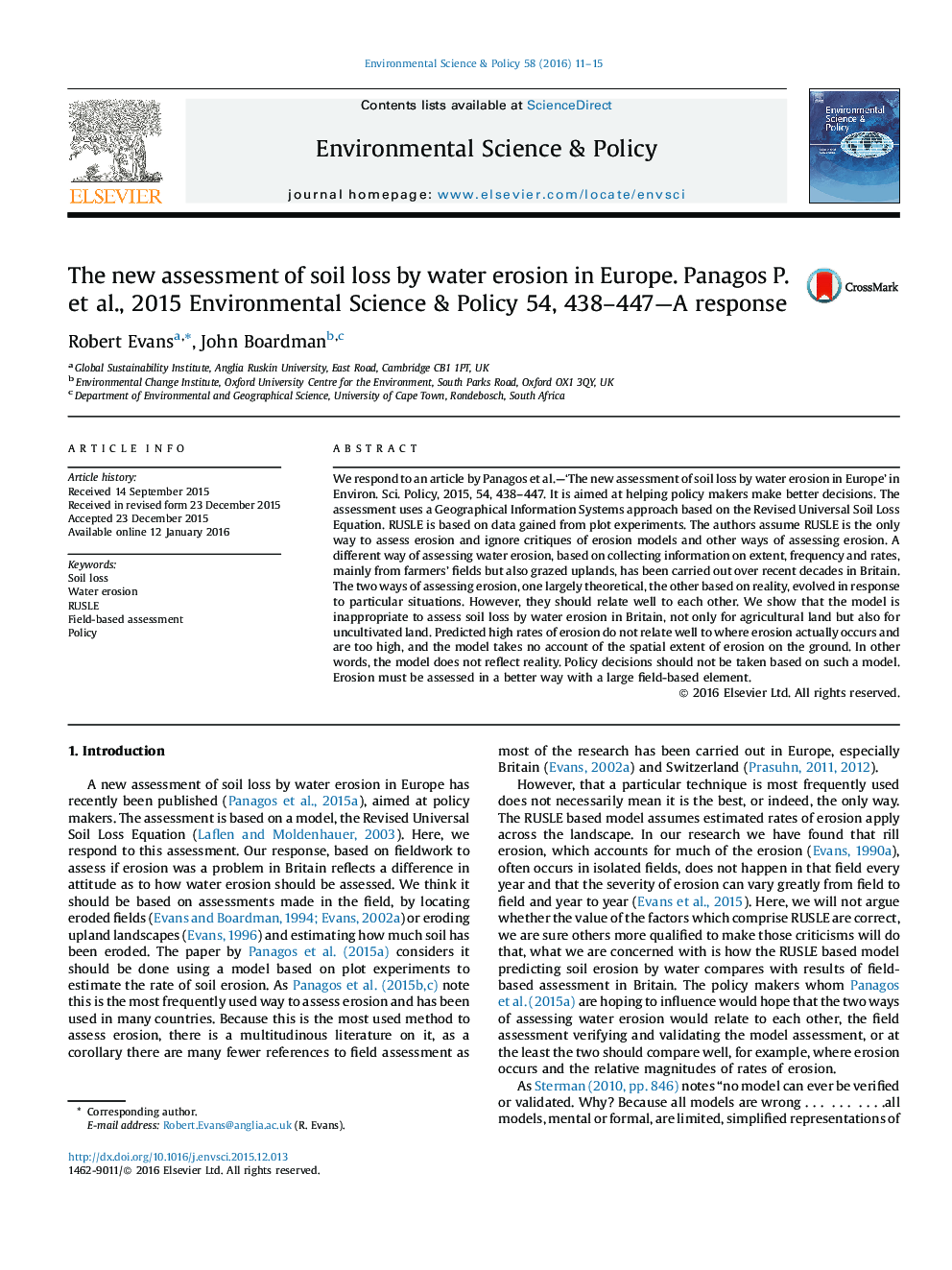| کد مقاله | کد نشریه | سال انتشار | مقاله انگلیسی | نسخه تمام متن |
|---|---|---|---|---|
| 1053449 | 1485050 | 2016 | 5 صفحه PDF | دانلود رایگان |
• Review of a new assessment of soil loss by water in Europe.
• Critique of the theoretical model approach.
• Model assessment compared to field-based assessment of erosion in Britain.
• The two assessments do not compare well.
• Model assessment not sufficient as a basis for policy makers to make decisions.
We respond to an article by Panagos et al.—‘The new assessment of soil loss by water erosion in Europe’ in Environ. Sci. Policy, 2015, 54, 438–447. It is aimed at helping policy makers make better decisions. The assessment uses a Geographical Information Systems approach based on the Revised Universal Soil Loss Equation. RUSLE is based on data gained from plot experiments. The authors assume RUSLE is the only way to assess erosion and ignore critiques of erosion models and other ways of assessing erosion. A different way of assessing water erosion, based on collecting information on extent, frequency and rates, mainly from farmers’ fields but also grazed uplands, has been carried out over recent decades in Britain. The two ways of assessing erosion, one largely theoretical, the other based on reality, evolved in response to particular situations. However, they should relate well to each other. We show that the model is inappropriate to assess soil loss by water erosion in Britain, not only for agricultural land but also for uncultivated land. Predicted high rates of erosion do not relate well to where erosion actually occurs and are too high, and the model takes no account of the spatial extent of erosion on the ground. In other words, the model does not reflect reality. Policy decisions should not be taken based on such a model. Erosion must be assessed in a better way with a large field-based element.
Journal: Environmental Science & Policy - Volume 58, April 2016, Pages 11–15
